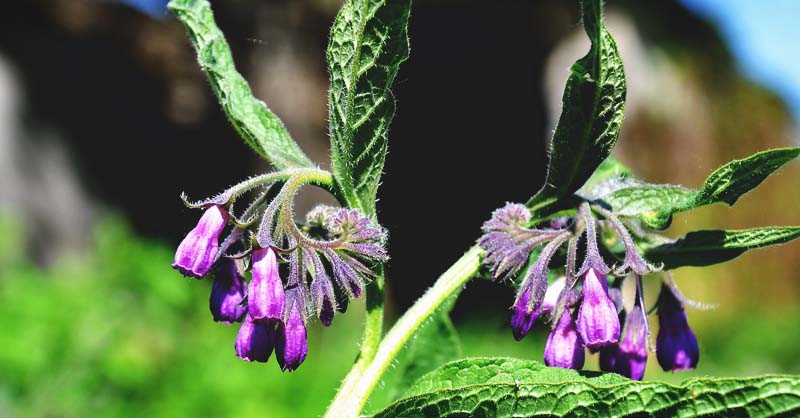Comprehensive Guide to Comfrey Planting for Optimal Growth and Yield

If you’ve ever watched comfrey dominate a messy corner of someone’s garden and wondered whether it’s friend or foe, welcome to the real gardener’s club. I’ve lost – and then won back – more patches of comfrey than I care to admit. Let me share what years in the trenches have taught me about giving this plant the best possible start (and keeping your sanity).

Ignore the Myths: Comfrey Thrives, But Not on Neglect Alone
Let’s set the scene: It’s early March, my boots are caked in last year’s mud, and I’ve got a box of stubby “Bocking 14” root cuttings in hand. Here’s what every how-to skips—if you toss them into boggy ground or shade expecting miracles, prepare for disappointment. Comfrey rewards intention far more than luck.
Insider tip: My oldest patch sits just downhill from my compost bins where rain drains away just enough. If puddles linger for hours in your spot, improvise with a quick mound of soil or use an old wooden crate filled with rich earth—a trick borrowed from my neighbor Jackie after her comfrey drowned one wet spring.
Root Cuttings vs Seeds: Why 90% of Serious Gardeners Never Touch Seed
Back in 2017, eager to save money, I started comfrey from seeds bought bargain-bin cheap online. Rookie move—those little devils scattered everywhere by the following summer. Half my strawberry bed was tangled in volunteer plants before I switched tactics.
Now? Only root cuttings or crowns, specifically disease-free Bocking varieties (I get them from Coe's Comfrey—it costs about $4 per cutting but guarantees no seed spread). Lay each root horizontally two inches down; if using a crown, nestle it upright so just the top peeks above ground.
Why this works: Sterile hybrids like ‘Bocking 14’ stay exactly where you put them—no unwanted guests next season. Plus, they rocket out leaves much faster than seedlings.
Spacing & Placement: Resist Cramping Them In
You’ll regret crowding comfrey just as much as planting too close together tomatoes—personal experience speaking from a sweaty summer wrestling tangled stems apart. Give each plant at least two-and-a-half feet radius; think of it as giving a rowdy dog its own kennel instead of crowding it into a shoebox.
Sensory moment: When properly spaced and thriving come June, comfrey explodes in four-foot fountains—bristly leaves brushing pant legs on morning walks and purple flower bells humming with bees by lunchtime.
Mulching Done Right: The Layer Most Beginners Forget
Here’s a funny story—I once skipped mulching around freshly planted comfrey because I “ran out.” Result? Weedy chaos that choked half my starts before July. Now I collect grass clippings all spring and lay them thick (1–2 inches) around each new clump but never against stems—the one time I did that, slugs had a field day chewing through tender growth by morning.
Go for whatever organic mulch is handy: straw (about $6 per bale), shredded fall leaves, even torn-up brown cardboard boxes if desperate.
Containment Secrets: When You Must Play Defense
A few years ago Tom—a crusty old-timer on our street—handed me his trick after losing control of wild comfrey: repurposed bottomless metal barrels sunk halfway into garden beds. This “root prison” completely stopped rhizome creep without compromising leaf production for compost tea brews.
If you’re nervous about invasiveness but don’t fancy engineering projects: simply plant far away from annual beds or near hard surfaces like driveways where errant shoots can’t travel unchecked.
Plant Problems You’ll Actually Face—And How To Solve Them
- Nothing yet? Don’t panic if shoots haven’t appeared after two weeks; most cuttings stir only when soil really warms up.
- Yellowed leaves? Every time this happens here (usually after several wet days), adjusting for drainage made all the difference—inclined beds solve 90% of issues.
- Unwanted offspring? Look for shallow chunks accidentally sliced when weeding nearby—I gently pry up interlopers with a hand fork to avoid leaving fragments behind.
- Worried about pets/kids? I keep my patch cordoned with string on bamboo canes—the visual barrier keeps curious little fingers at bay far better than warnings do!
Level Up Without Fancy Tools
Don’t buy into fertilizer hype; rich homegrown compost tops annually do wonders thanks to those trench-digging taproots (mine easily reach down over two feet after three seasons). My best harvests came years I ignored all store-bought feeds and simply mulched thick every fall after leaf drop ($0 cost).
Water-wise—one long soak per week during dry spells keeps plants crisp and lush; daily sprinkles achieve nothing but encourage shallow rooting (learned this lesson painfully during August heatwaves).
Lessons From Failed Starts And Unexpected Victories
To this day, my first attempt haunts me—a shaded slope behind the shed seemed ideal until June sun vanished behind apple-blossom shade… those plants limped along then fizzled out entirely by mid-July. Lesson learned? Observe light patterns before planting!
But my biggest win was planting under open trellis fencing beside my compost heap—even in rocky clay loam rife with stones. With regular late afternoon watering (just once weekly!), roots dived deep while foliage formed a lush screen quicker than any hedge could have managed that year.
Final Thought: Grow With Confidence And Curiosity
Everything written in glossy how-to books glosses over how forgiving—and stubborn—comfrey actually is. Perfection isn’t required; observation is everything! Treat your first season as an experiment:
- Pick sun + drain + elbow room.
- Use verified root cuttings/crowns.
- Soak deeply at first planting.
- Mulch wide; keep stem breathing!
- Minimize digging nearby afterwards.
- Check growth patterns—not “textbook dates”—before deciding success/failure.
Best advice from decades working with this powerhouse herb? Lean into observing your patch over strict rule-following—you’ll be harvesting armloads of leafy “green gold” by your second summer if you let experience teach you what generic guides never will.
Roll up your sleeves—the best learning is hands-on!



